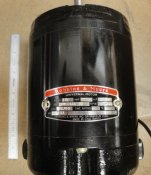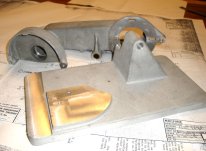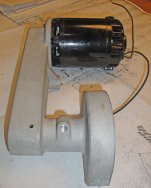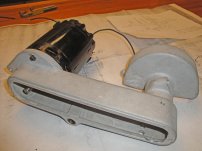piedmontg
Aluminum
- Joined
- Dec 10, 2007
- Location
- NW Illinois
I am building a small cut off saw from a set of castings. The motor supplied cranks 10000 rpm with enough torque to have jump off the table. My concern is the four 10-32 mounting screws are not going to hold this very long. I have used VFD’s in a number of applications for “soft” or “slow” start not sure terminology is correct but the result is nice easy start ie one example is 7 ½ HP air compressor.
Is there a simple circuit that will just ramp up the rpm’s? It is a universal motor and I have speed controls that will ramp up slowly as I turn the knob, but that is really not practical.
I did some searches on line and here but really did not see anything simple. Maybe just some Loctite and hope for the best.
All advice is welcome
Plate reads: volts 115, amp 5.1, hp 1/2, rpm 10000, cyc dc/60



Is there a simple circuit that will just ramp up the rpm’s? It is a universal motor and I have speed controls that will ramp up slowly as I turn the knob, but that is really not practical.
I did some searches on line and here but really did not see anything simple. Maybe just some Loctite and hope for the best.
All advice is welcome
Plate reads: volts 115, amp 5.1, hp 1/2, rpm 10000, cyc dc/60






